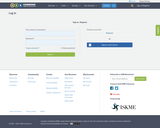
Simple angles worksheet for 4th grade math standard
- Subject:
- Geometry
- Material Type:
- Lesson Plan
- Author:
- Ashley Person
- Date Added:
- 06/12/2019

Simple angles worksheet for 4th grade math standard
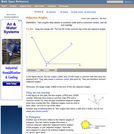
An interactive applet and associated web page that show the concept of adjacent angles (two angles that share a common leg). The applet shows three line segments with a common endpoint. The user can move the center one and see that the angles on both sides (the adjacent angles) of it are affected. Applet can be enlarged to full screen size for use with a classroom projector. After use in the classroom, students can access it again from any web browser at home or in the library with no login required. This resource is a component of the Math Open Reference Interactive Geometry textbook project at http://www.mathopenref.com.

This lesson unit is intended to help teachers assess how well students are able to: work with concepts of congruency and similarity, including identifying corresponding sides and corresponding angles within and between triangles; Identify and understand the significance of a counter-example; Prove, and evaluate proofs in a geometric context.

Students explore the characteristics of complementary, supplementary, and vertical angles.
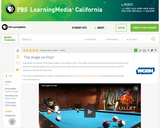
Find out how angles and symmetry come into play in the game of pool in this video adapted from Annenberg Learner’s Learning Math: Measurement.
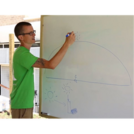
In this lesson, students will apply the use of angles to a real-world problem—finding the angle of the sun to determine the placement of solar panels. This lesson can be used to teach about angles, or to reinforce and apply understanding of angles.
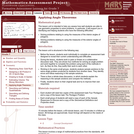
This lesson unit is intended to help you assess how well students are able to use geometric properties to solve problems. In particular, it will support you in identifying and helping students who have the following difficulties: Solving problems relating to using the measures of the interior angles of polygons; and solving problems relating to using the measures of the exterior angles of polygons.
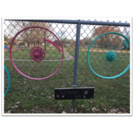
Students will identify and compare attributes of two-dimensional shapes in the world around them.

What starts out as a cascade of well-mixed granular materials sorts itself into alternating layers of salt and sand.
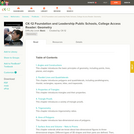
This book is a "flexed" version of CK-12's Basic Geometry that aligns with College Access Geometry and contains embedded literacy supports. It covers the essentials of geometry for the high school student.
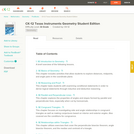
CK-12 Foundation's Geometry FlexBook is a clear presentation of the essentials of geometry for the high school student. Topics include: Proof, Congruent Triangles, Quadrilaterals, Similarity, Perimeter & Area, Volume, and Transformations.
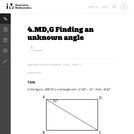
The purpose of this task is to give 4th grade students a problem involving an unknown quantity that has a clear visual representation. Students must understand that the four interior angles of a rectangle are all right angles and that right angles have a measure of 90_ and that angle measure is additive.

The goal of this lesson is to assist students to relate the forces acting upon particular objects and the “unseen” resolution of those forces. The video begins with a story line involving Adam, who helps his father in the garden by disposing of a garbage bag of leaves—the very act that involves resolution of forces. This lesson includes embedded video clips, animations, diagrams and inquiry-based experiments where students are required to work collaboratively and answer thought-provoking questions. The experiments will involve the study of the resolution of forces on objects placed on varying planes or on platforms of different angles, using materials that are easily found. Finally, students are required to discuss and apply what they have learned to determine whether it is easier to push or to pull a luggage bag with wheels. The lesson will take about 50 minutes to complete.
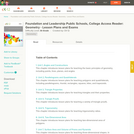
A structured geometry program teacher edition of daily lesson plans and teacher supports to accompany the College Access Reader: Geometry student edition.

Key ConceptsAdjacent angles are two angles that share a common vertex and a common side, but do not overlap. Angles 1 and 2 are adjacent angles.Supplementary angles are two angles whose measures have a sum of 180°. Angles 3 and 4 are supplementary angles. Complementary angles are two angles whose measures have a sum of 90°. Angles 5 and 6 are complementary angles. Vertical angles are the opposite angles formed by the intersection of two lines. Vertical angles are congruent. Angles 1 and 2 are vertical angles. Angles 3 and 4 are also vertical angles.Goals and Learning ObjectivesMeasure angles with a protractor and estimate angle measures as greater than or less than 90°.Understand the definition of vertical, adjacent, supplementary, and complementary angles.Explore the relationships between these types of angles.
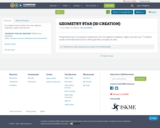
It's a simple review of point, line, line segment, endpoints, angles, and ruler use.

Geometry is concerned with the various aspects of size, shape and space. In this unit, you will explore the concepts of angles, shapes, symmetry, area and volume through interactive activities.
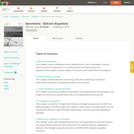
CK-12 Foundation's Geometry FlexBook is a clear presentation of the essentials of geometry for the high school student. Topics include: Proof, Congruent Triangles, Quadrilaterals, Similarity, Perimeter & Area, Volume, and Transformations.
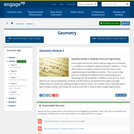
Just as rigid motions are used to define congruence in Module 1, so dilations are added to define similarity in Module 2. To be able to discuss similarity, students must first have a clear understanding of how dilations behave. This is done in two parts, by studying how dilations yield scale drawings and reasoning why the properties of dilations must be true. Once dilations are clearly established, similarity transformations are defined and length and angle relationships are examined, yielding triangle similarity criteria. An in-depth look at similarity within right triangles follows, and finally the module ends with a study of right triangle trigonometry.
Find the rest of the EngageNY Mathematics resources at https://archive.org/details/engageny-mathematics.
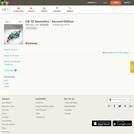
CK-12's Geometry - Second Edition is a clear presentation of the essentials of geometry for the high school student. Topics include: Proofs, Triangles, Quadrilaterals, Similarity, Perimeter & Area, Volume, and Transformations.